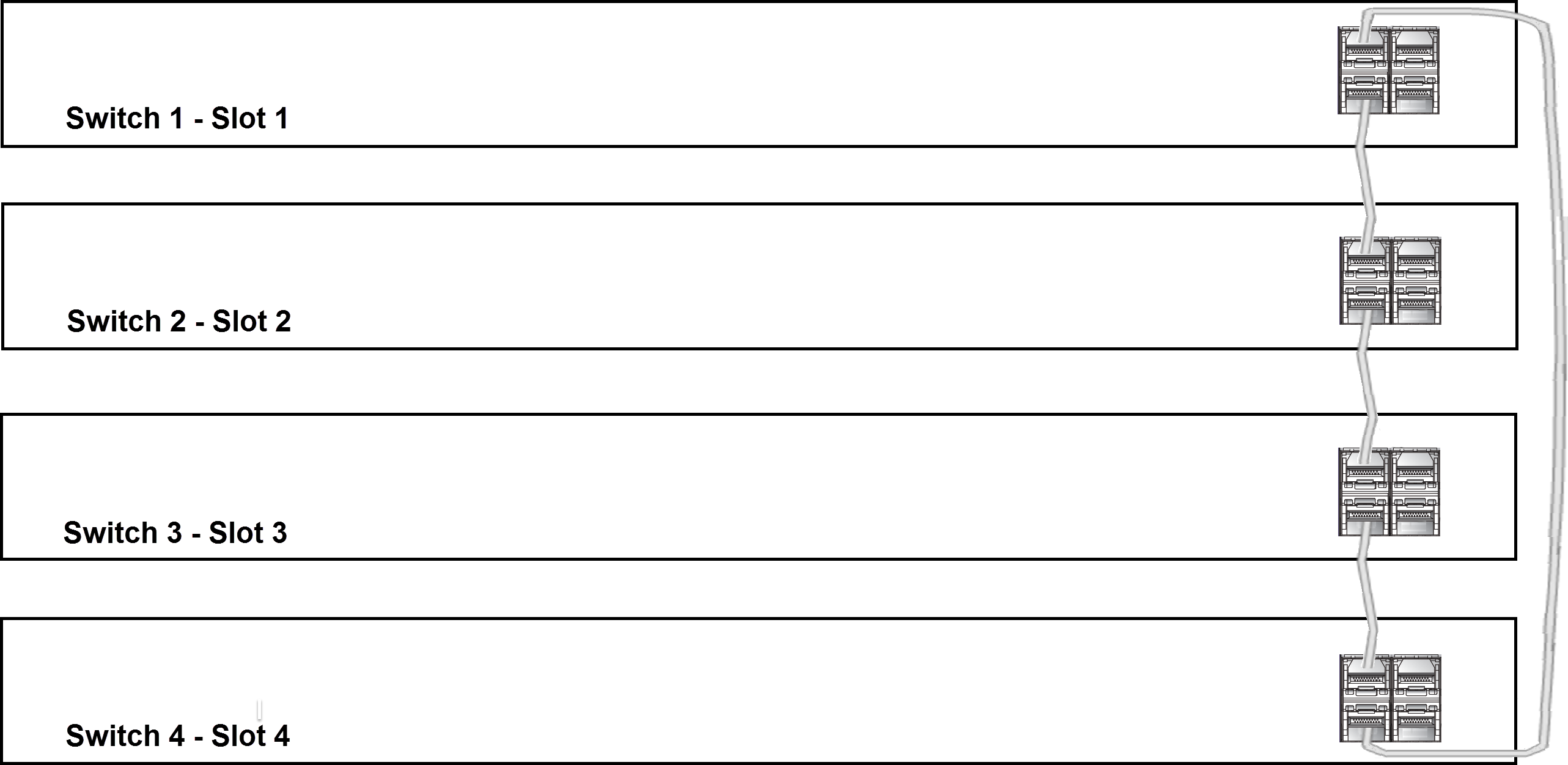Here are some sample stacking configurations for 220 series switches.
In each example in this section, the stacks consist of 48-port switches and connections are made through SFP+ ports 49 and 50.
If you are stacking 24-port switches, make the connections through SFP+ ports 25 and 26.
If you are stacking 12-port switches, make the connections through SFP+ ports 13 and 14.
This example shows a stack of four switches in a single rack.

Stacked Switches in a Single Rack: Recommended Connections (48-Port Switches)
| Connect this slot and port . . . | . . . To this slot and port | ||
|---|---|---|---|
| Slot 1 | Port 50 | Slot 2 | Port 49 |
| Slot 2 | Port 50 | Slot 3 | Port 49 |
| Slot 3 | Port 50 | Slot 4 | Port 49 |
| Slot 4 | Port 50 | Slot 1 | Port 49 |

Note
If you are stacking 24-port switches, make the connections through SFP+ ports 25 and 26.
If you are stacking 12-port switches, make the connections through SFP+ ports 13 and 14.
The following example shows four switches physically located in two adjacent racks.

Stacked Switches Across Two Racks: Recommended Connections (48-Port Switches)
| Connect this slot and port . . . | . . . To this slot and port | ||||
|---|---|---|---|---|---|
| Slot 1 | Rack A | Port 50 | Slot 3 | Rack A | Port 49 |
| Slot 2 | Rack B | Port 50 | Slot 1 | Rack A | Port 49 |
| Slot 3 | Rack A | Port 50 | Slot 4 | Rack B | Port 49 |
| Slot 4 | Rack B | Port 50 | Slot 2 | Rack B | Port 49 |

Note
If you are stacking 24-port switches, make the connections through SFP+ ports 25 and 26.
If you are stacking 12-port switches, make the connections through SFP+ ports 13 and 14.

Stacked Switches Across Several Racks: Recommended Connections (48-Port Switches)
| Connect this slot and port . . . | . . . To this slot and port | ||||
|---|---|---|---|---|---|
| Slot 1 | Rack A | Port 50 | Slot 2 | Rack B | Port 49 |
| Slot 2 | Rack B | Port 50 | Slot 3 | Rack C | Port 49 |
| Slot 3 | Rack C | Port 50 | Slot 4 | Rack D | Port 49 |
| Slot 4 | Rack D | Port 50 | Slot 1 | Rack A | Port 49 |

Note
If you are stacking 24-port switches, make the connections through SFP+ ports 25 and 26.
If you are stacking 12-port switches, make the connections through SFP+ ports 13 and 14.